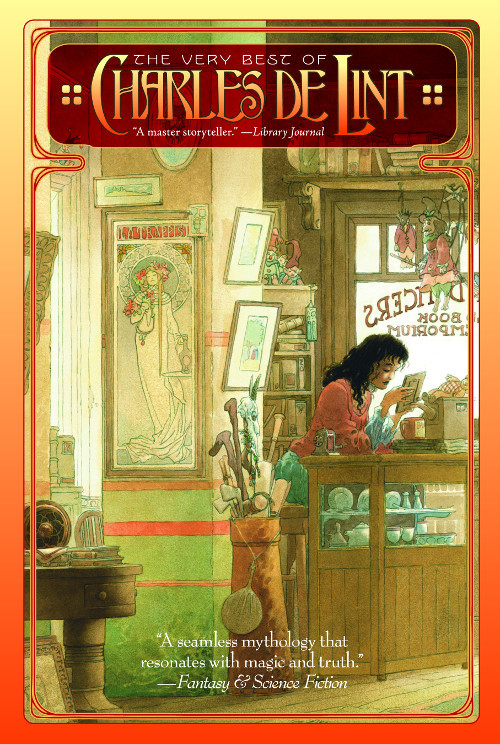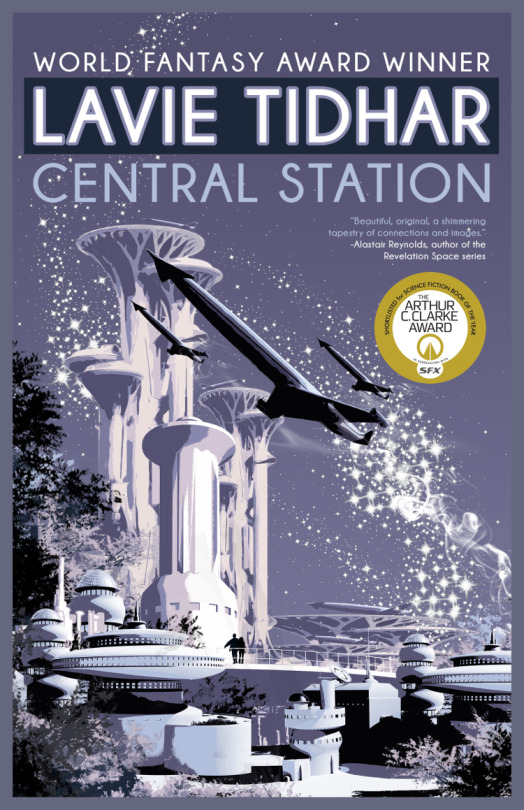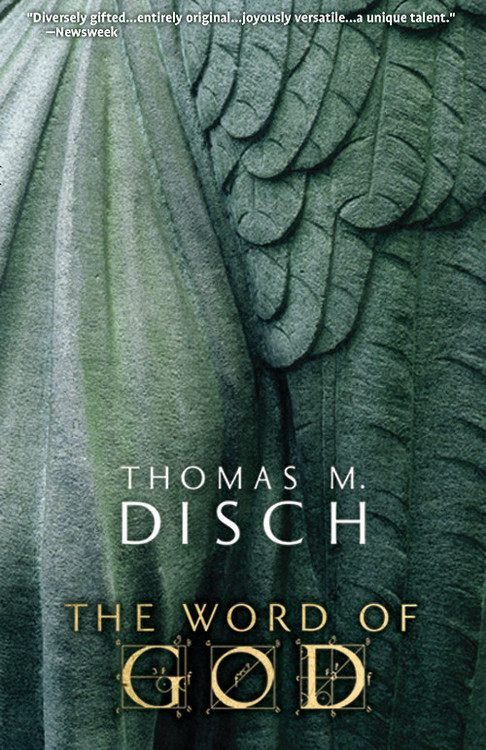Tachyon tidbits featuring Charles de Lint, Lavie Tidhar, Brian Aldiss, and Thomas Disch
The latest reviews and mentions of Tachyon titles and authors from around the web.

Charles de Lint (photo: Leslie Howle), Lavie Tidhar (Kevin Nixon. © Future Publishing 2013), Brian Aldiss (John Lawrence), and Thomas Disch (Houari Boumedienne)
The Canadian Science Fiction & Fantasy Association recognizes the extraordinary Charles de Lint as a 2017 inductee into the CSFFA Hall of Fame.
The CSFFA Hall of Fame recognizes the Outstanding Achievements that have contributed to the stature of Science Fiction and Fantasy.
It can be awarded to Canadian Writers, Publishers, Editors, Poets, Artists, Graphic Novelists, Actors, Producers, Musicians/Filkers, Convention organizers, Fans, Scientists, Astronauts and others.
The Hall of Fame began with those who were previously awarded the Lifetime Achievement Award. Since 2014 a jury has chosen the inductees each year.
Inductees for 2017
Lorna Toolis
Elisabeth Vonarburg
Charles de Lint
Congratulations to Charles and the other inductees.

Andrew Wallace on his eponymous site shares some of outtakes from Konrad Walewski’s discussion with Lavie Tidhar, author of the John W. Campbell Award winning CENTRAL STATION at the British Science Fiction Association’s September event.
Lavie Tidhar’s freewheeling style is well-suited to original narrative forms that subvert Western genre fiction tropes, while still engaging with them almost as props. For example, he says this year’s Clarke Award-nominated CENTRAL STATION gave him the opportunity to employ Golden Age imagery, like the action around a spaceport, and then let it fade into the background as if it’s being ignored. This repositioning gives a nonchalant impression, rather like the author’s noirish detective protagonists. However, in the same way the world-weary 40s gumshoe turns out to be the only person in the story with any compassion, so Lavie’s books reveal more complex themes than their setups imply.

Lavie seeks to avoid the traditional plot/action-heavy narratives so familiar in Western science fiction. His ambition with CENTRAL STATION was to create an homage to novels like Clifford D Simak’s CITY: a cohesive narrative that evolved in sections. Both books were created as a single work, sold as a series of short magazine stories and then sold a second time as novels. Another influence on CENTRAL STATION is Cordwainer Smith’s THE REDISCOVERY OF MAN, with its framing device of characters in the distant future referring to a past that is millennia ahead of 2017.
This commingling of timescales to create a disorienting sense of place has a physical corollary in the real-world model for CENTRAL STATION: the bus terminal in Tel Aviv. The terminal was conceived as a futuristic transit facility with built-in theatres and an internal structure based on the ancient City of Jerusalem, with its complex but oddly comforting alleyways. Instead, the place is a vast, dystopian maze haunted by sex professionals and drug dealers, while the bus passengers themselves are often disadvantaged groups like refugees from Africa and economic migrants.
For KIRKUS, Andrew Liptak remembers Brian Aldiss.
Last month, the science fiction world lost a giant. Brian Aldiss was both a prolific author and editor in the field, as well as one of its foremost commentators and historians. Known for books such as his HELLICONIA TRILOGY and HOTHOUSE, as well as genre histories such as THE TRILLION YEAR SPREE, he’s been called one of the most significant writers of science fiction.

Aldiss continued to publish prolifically throughout the 1950s and 1960s, and was associated with the New Wave movement of the 1960s alongside authors such as J.G. Ballard and Michael Moorcock. He also edited a number of popular anthologies for Penguin Books, such as PENGUIN SCIENCE FICTION (1961), MORE PENGUIN SCIENCE FICTION (1963), and YET MORE PENGUIN SCIENCE FICTION (1964), as well as numerous other themed anthologies throughout the 1970s.
In the 1980s, Aldiss published his Helliconia trilogy (HELLICONIA SPRING (1982), HELLICONIA SUMMER (1983), and HELLICONIA WINTER (1985)), a cycle set in the distant future on a planet known as Helliconia, in which a single year is the equivalent of 2500 Earth years. He uses this trilogy to chronicle the rise and fall of this world, calling back to pulp planetary romances, and earning considerable critical acclaim for the series, including nominations for the Nebula Award.
Aldiss is also well known for his short story ‘Supertoys Last All Summer Long’, which was first published in the December 1969 issue of Harper’s Bazaar, and later collected in Aldiss’s 1970 collection THE MOMENT OF THE ECLIPSE. The story follows Monica, a woman who is having trouble bonding with her robotic son, David, who in turn is having bonding troubles of his own with his ‘mother.’ The story attracted the attention of director Stanley Kubrick in the 1980s, who began to develop it into a film. Before his death, he passed the project to Steven Spielberg, who released an adaptation under the title A.I. ARTIFICIAL SPIELBERG in 2001.
Kevin Power in the LOS ANGELES REVIEW OF BOOKS discusses Thomas M. Disch’s struggles with the Catholic Church.
The play was called THE CARDINAL DETOXES. It was, as Disch later confessed in an essay for THE HUDSON REVIEW, “designed to serve as a vehicle for my hoard of opinions concerning the secret, Realpolitik reasons for the Catholic Church’s more opprobrious policies and scandalous behaviour.” Disch — who was known as a poet and science fiction writer — had been raised Catholic, and described himself as “a passionate and devout ex-Catholic since my teen-age years.” “Like so many other fervent ex-Catholics,” he wrote, “the Church’s misdeeds were my hobbyhorse. But I’d never ridden that hobbyhorse for any distance.” THE CARDINAL DETOXES was Disch’s battle charge against the Church: a scabrous assault on an institution riddled, as Disch saw it, with venality, hypocrisy, and greed. It was designed to provoke a response. When it did, Disch was frankly gratified. “I found the whole thing,” he admitted, “pretty exhilarating.”
RAPP ignored the Church’s cease-and-desist instructions.THE CARDINAL DETOXES went ahead as scheduled. But the Church wasn’t finished yet. On September 20, 1990, the controversy debuted in the mainstream media, when Joseph Zwilling, press agent for Cardinal John O’Connor (the archbishop of New York), released a statement condemning Disch’s play. This play, Zwilling said, “is detrimental to the Catholic Church. Even though it [the theater building] is rented by an outside group, we still have to run it in keeping with Church teachings. We include a clause in the lease to insure that.”

Disch’s final novel, THE WORD OF GOD (2008) — which suggests, mischievously, that Disch’s real father may have been Thomas Mann, who may or may not have paid a flying visit to Iowa in 1940 — was brought out by Tachyon Publications, a small press. In 2005, Charles Naylor died after a long illness; Naylor’s name was on the lease of the rent-controlled apartment on Union Square West that he and Disch shared. The landlord, seeing a chance to raise the rent, immediately served Disch with a notice of eviction. “If I lost the apartment,” Disch said to a friend, “I’d have to shoot myself.” Crippled by sciatica and diabetes, Disch, on the July 4, 2008, carried out this threat. The Word of God had been published just three days previously.
For more information about THE VERY BEST OF CHARLES DE LINT, visit the Tachyon page.
Cover by Charles Vess
For more info about CENTRAL STATION, visit the Tachyon page.
Cover by Sarah Anne Langton
For more info about CULTURAL BREAKS, visit the Tachyon page.
Cover by John Picacio
For more info about THE WORD OF GOD: OR, HOLY WRIT REWRITTEN, visit the Tachyon page.
Cover by Ann Monn
